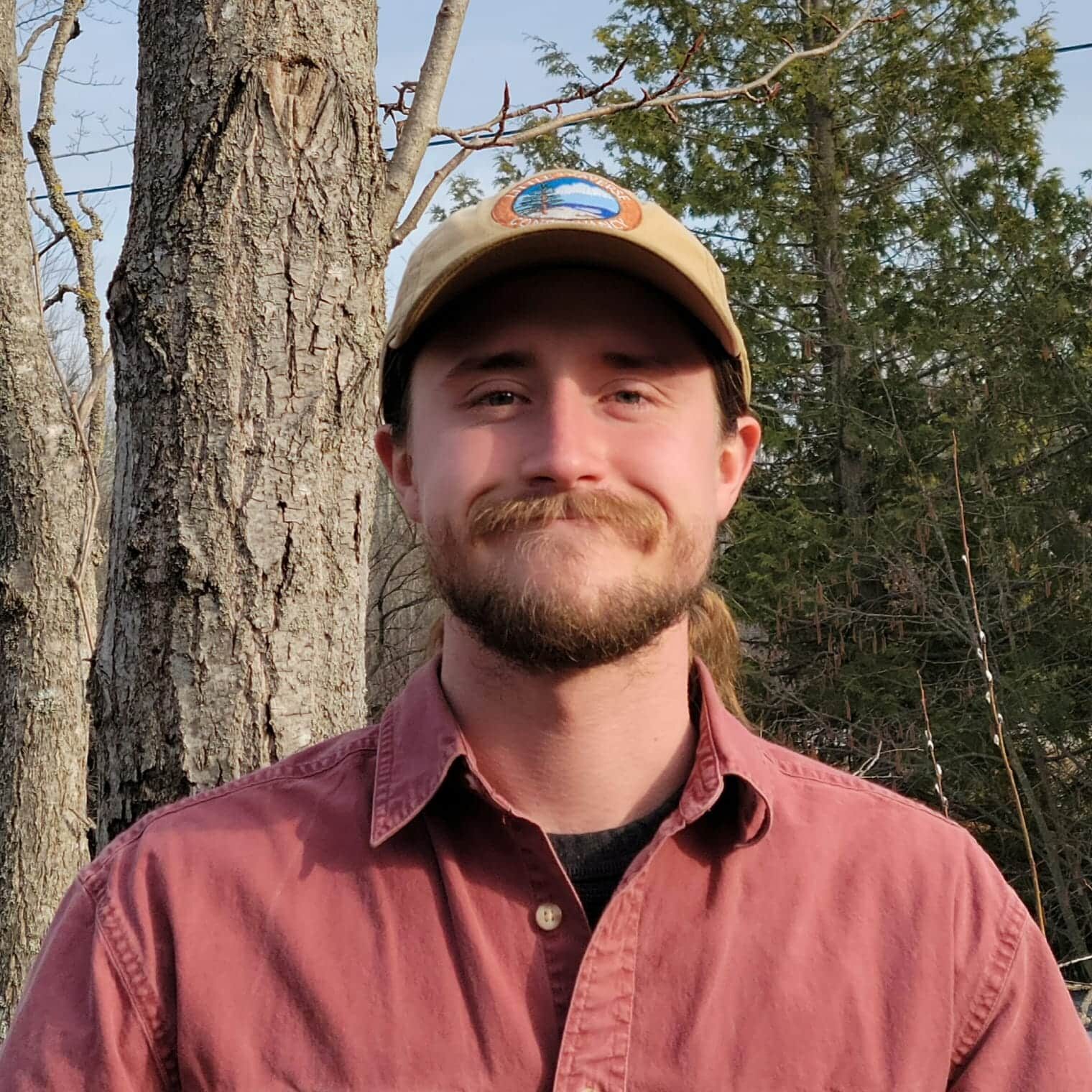Little Traverse Conservancy
Ecological Conditions and Response Program
Ecological Inventorying
How can we best care for the 27,600+ acres of land within our care? By learning what is our responsibility to protect. With a deeper understanding of the resources within these lands, we can better steward them into the future. A new program of LTC’s Stewardship Department aims to do just that. Through a multi-year process with expert staff and partners, LTC will identify, record, and develop a plan for the unique and special natural features we discover. The work we do now will inform how we do our work at a high level to protect wild spaces forever.
Phase I Complete!
As of 2025, our ECAR Program has inventoried all habitats at every LTC nature preserve and working forest reserve. This process was comprehensive and eye-opening for us and will be invaluable as we create individualized plans to care for our lands in the future.
If the wonder of plant and animal diversity lights you up as it does us and if you would like to help us see wildlife continue to thrive, please click the donate button below to support the ECAR initiative.
Thank you to the donors who make this program possible:
Americana Foundation
Charlevoix County Community Foundation
Cherry Republic
Michael and Debbie Esposito
Jerry and Eileen Fhaner
Mr. and Mrs. Brian Fisher
U.S. Fish and Wildlife Service through the Great Lakes Fish and Wildlife Restoration Act and Coastal Programs
The Highlands
Mrs. Ann K. Irish
Land Trust Alliance
Josette Lory and John McLeod
Ms. Mary K. McIntire
Kathleen and Diana Medrano
Dragonfly Fund/Liesel Litzenburger Meijer
Oliver and Cunningham Family Foundation
Jeff and Mary Read
Pamela K Schooley
Karie Slavik
Dr. Daryl Van Tongeren and Sara Showalter Van Tongeren
Steven and Julie Ann Wang
meet our staff who make this program possible:
Phase II
We’ve finished the first part of our inventory, and now we’re ready for Phase II. In this next step, we’ll look closely at what we found by studying the habitat areas such as those shown on the Woollam Habitat Map. Keep scrolling to learn more about these maps and how they’ll help guide our work.
Woollam Habitat Map
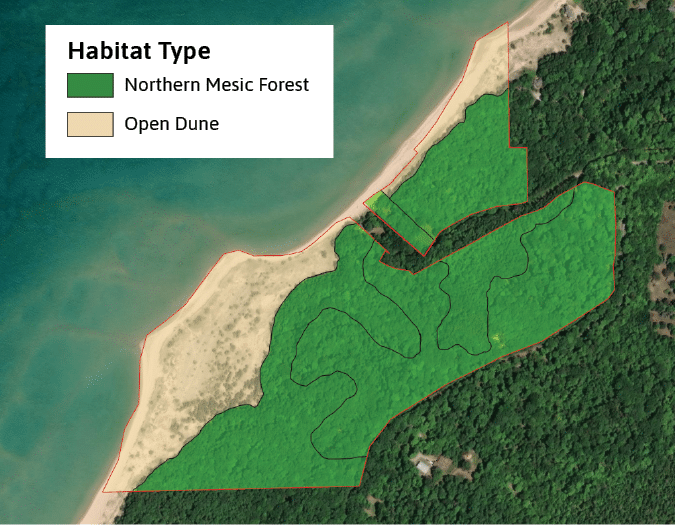
Each stand was assigned a qualitative Health Score between 1 and 5, with a score of 1 signifying low ecological quality or poor health and a 5 being a high-quality and healthy habitat. Scores of 1 to 2.5 were classified as Marginal Habitats, 3 to 3.5 as Functional Habitats, and scores of 4 to 5 as Intact Habitats. To determine the Health Score of a habitat, the evaluators, from LTC and Michigan Natural Features Inventory (MNFI) staff, looked at the composition, structure, and any impairments. For example, at the Woollam Family Nature Preserve, an old home site with a driveway has impaired the habitat health of one of the stands (see 1. Ecological Health Map below). The stands were then assigned a Trend Score, which is the best professional judgment on the level of a threat in or near the stand that would lead to deteriorating quality (see 2. Trend Status Map below).
1. Ecological Health Map
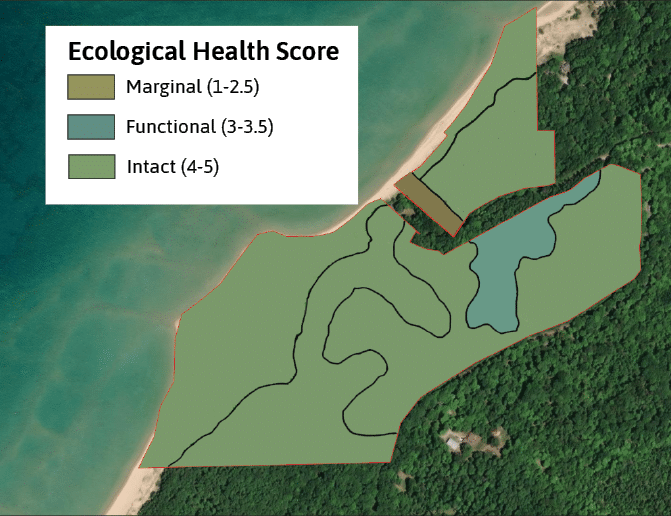
2. Trend Status Map
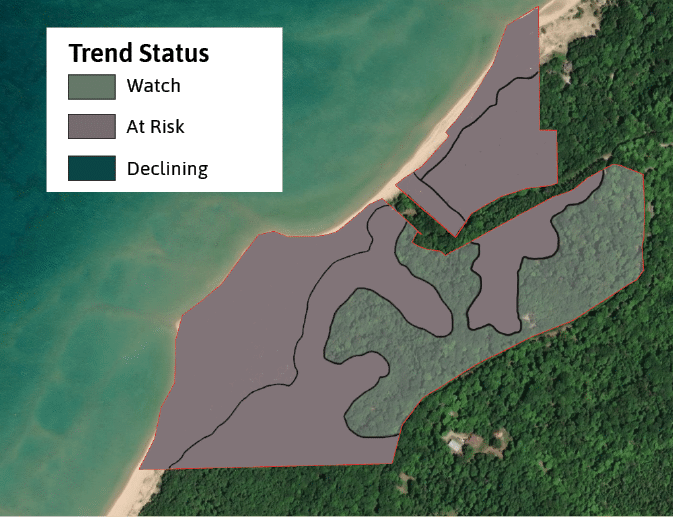
The Health Score and Trend Score are used to calculate a Response Priority. There are four response categories: Low, Moderate, High, and Very High. This score helps us prioritize our stewardship management response. If a property has a high Health Score and a Trend Score that is deteriorating due to a factor impacting the health of the habitat, this habitat would receive a high Response Priority Score.
At the Woollam Family Nature Preserve (see 3. Response Priority right), the high-quality open dune habitat has moderate-level ‘at-risk’-level threats such as encroaching invasive species and high foot traffic from human visitors. Therefore, these areas become higher priorities for management activities such as vegetation management and managing visitor use to minimize trampling.
3. Response Priority Map
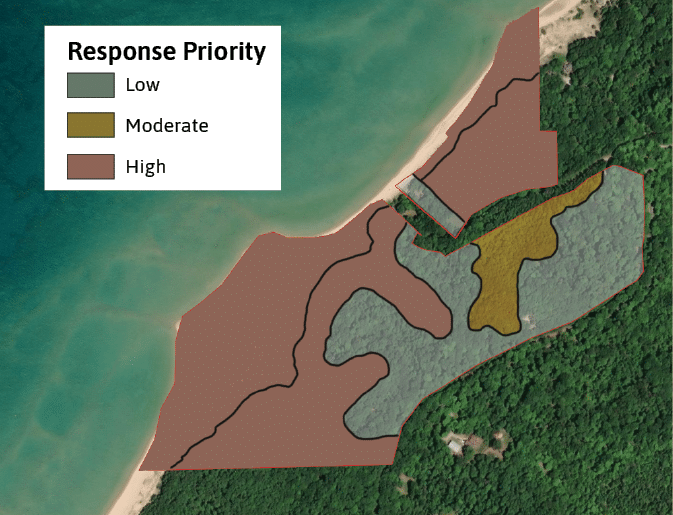
The outcome of the ECAR program is to develop management responses (the “R” in ECAR). The maps help us evaluate the data, which reveals that though the overall health of the Woollam Family Nature Preserve is intact, or good, it is at risk of degrading due to the previously mentioned invasive species and high use. As we create a management response for this preserve, we will give more attention to preventing and controlling invasive species and implementing trail features to mitigate erosion or habitat loss due to trail use. This program is producing immediate results and building a foundation so that future stewards will have a vital baseline to measure and understand the health of our lands.

